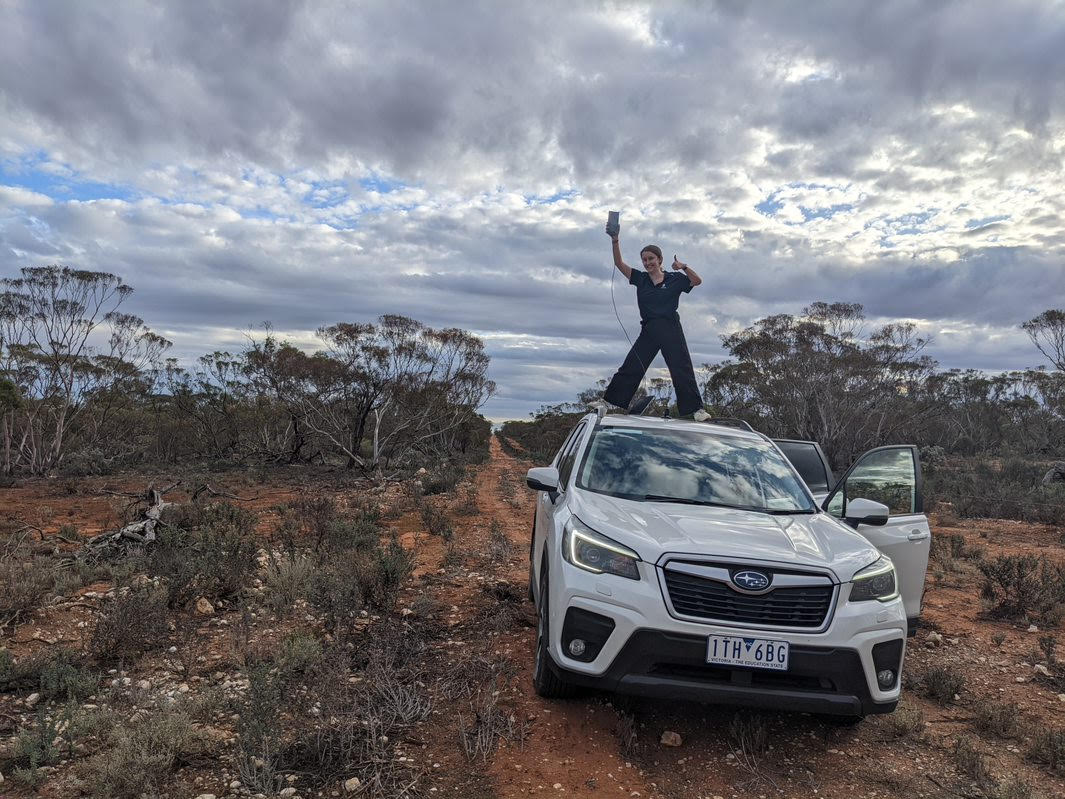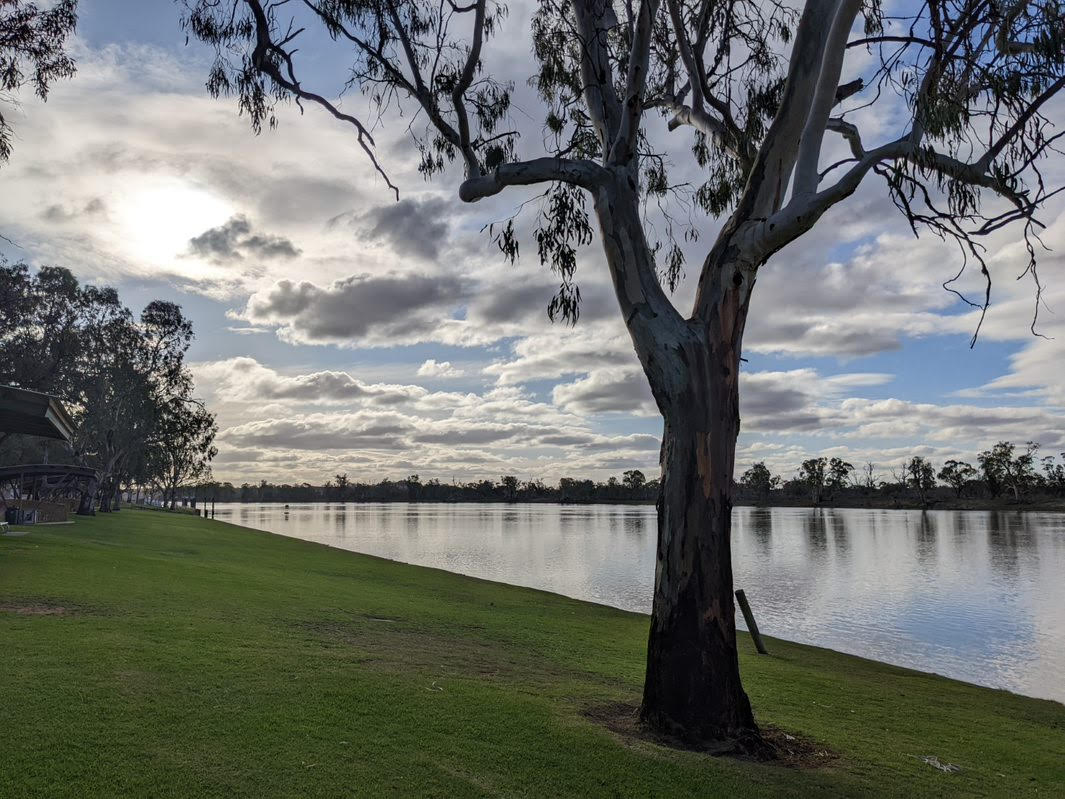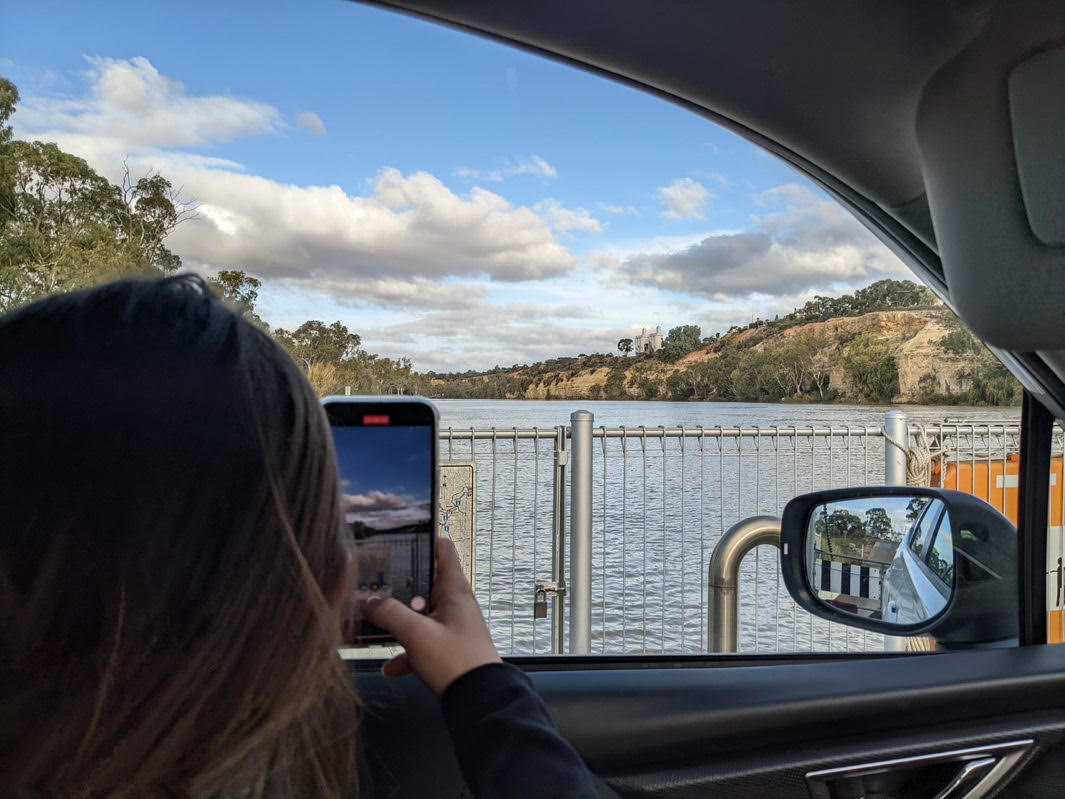Ericsson
Georgia Manthey
6.00 AM
Working as an integration engineer has many perks, including waking up early for field trips. A "semi" typical day in the life at Ericsson may start with an inter-state flight or filling up on snacks for a drive test (aka road trip). My day includes starting a week-long trip to complete field testing for the customer.
7.30 AM
Arrive at the airport to check in our oversized baggage (equipment, yagi's, radio scanners etc.). For field trips we aim to pack light on the personal items, heavy on the equipment.

This is a yagi antenna, we'd bring this out to field to determine signal power or gauge site direction. As you can imagine, it always ends up in oversized baggage.
8.00 AM
After checking in, a pre-flight coffee is essential. Before boarding, I tend to catch up on emails and chat with my colleagues about our upcoming trip. We might go through upcoming tests and the plan of attack for the day. Here, we may also panic about things we forgot, hopefully I packed all the chargers.
8.30 AM
Now it's time to rest up on the flight before a big day of testing. If you're like me, now is the time to make your "to-do list" for the day and finalize the draft TOL (test object list).
Field tests can be conducted for a range of reasons including; comparing lab conditions versus real world results, test specific customer features, troubleshooting problems, assisting PR announcements. Therefore, it is important to complete as many of the test cases as possible during the timeframe. Before field tests, we have an idea of what the outcome could be. It can be very exciting, pushing world record's for the customer with new equipment and software.
10.00 AM
After (hopefully a short) flight, arrive at the destination, pick up the rental car and head to the testing location/area!
Once arrived, some checks may be completed:
- Initial tests to check our User Equipment (UE) is working
- Check our laptop's software is running to log data
- Scan initial radio conditions
- Configure the sites to allow for specific testing conditions
If all clear, let the testing begin!

12.00 PM
Lunch is the perfect time to take a well-deserved break in front of a nice view. Lunch normally consists of the test crew eating together with food from a local bakery or finding something on the go.

1.00 PM
For the next few hours, it's crunch time. As many tests on the TOL will be carried out. Logs and results will be documented this time so that when we arrive back at the lab, we can process the results and send to the relevant teams for checking or to use in the next stages of development. In field, radio and terrain conditions are unpredictable and testing never goes exactly to plan. However, it is very important to have a rough idea on what we expect the outcome to be so that we can make the most of the conditions.
5.00 PM
It's time to drive back to the hotel after a full day of testing. If we're lucky, we might catch an outback sunset on the drive back. Once back at the hotel, this might be a good opportunity to have a shower, relax for a bit, watch some tv then ready for a dinner at the local pub or any of the surrounding restaurants. Personally, I like to catch up on any Netflix series or Facetime my family to debrief on the day.

8.00 PM
If the day has been jam packed with testing, now is a good time to summarize the findings from the day and pass onto our team for their comments. This allows us to start the following day with fresh perspectives and an efficient TOL.
The two biggest perks of field tests for me is exploring and learning. While testing, you're thrown into the deep end, constantly learning about new technologies and how everything is inter-connected. Testing in real world conditions can have many complications as there are so many elements to consider. Field testing is the perfect environment to test your problem solving skills and ability to troubleshoot.
Field tests are super valuable for me as a young professional as I have the opportunity to ask my colleagues as many silly questions as possible, hoping to boost my technical knowledge, directly applicable to my day-to-day work.
Exploring while on the road can be pretty cool too, getting to see parts of the world you never expect! (see below)

